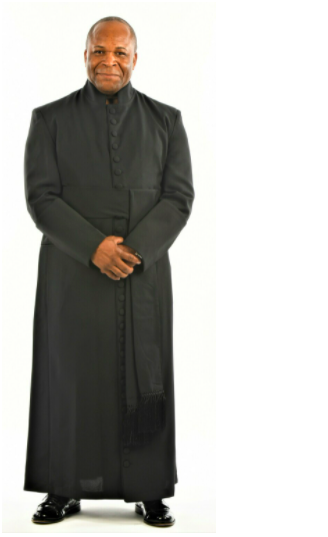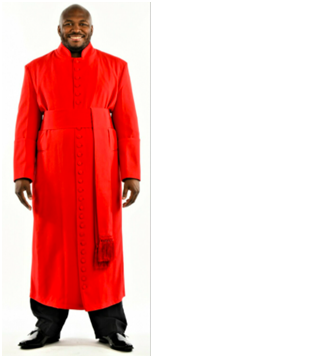The History Behind the Roman Cassock
Dec 27th 2021

Clerical wear has a vast amount of garments that are worn for various purposes, ceremonies, events, holidays, and other special occasions. There are clerical shirts, clergy suits, surplices, pulpit robes, and so much more.
One clerical garment that is especially well-known is the cassock, specifically the Roman cassock, which is a style of cassock. Let’s take a closer look at the histor of the Roman cassock and what it has become today.
What is a Roman cassock?
Cassocks are full-length, solid-colored robes worn by priests while in Catholic country. These clerical garments are worn by clergy of not only the Catholic church but also Eastern Orthodox Church and some Protestant denominations.
These garments have buttons down their front, long sleeves, and typically stay relatively close to the body.
Cassocks are capable of being appropriately worn in more relaxed and casual scenarios but also religious services and other such events. It is very similar to the habit, a traditional garment worn by monks, friars, and nuns.
What is the origin of the Roman cassock?
As you might have already gathered from the title of the garment, the cassock has historical connections with Rome. Beneath the popular toga that was worn throughout Rome, there was a tunic. Most were made with two pieces of wool sewn together, then cutouts for armholes. The finer tunics were made of linen and silk.
Cassocks also have connection with Greece. Beneath the commonly worn himation, Greeks wore a chiton. Chitons were one-piece garments that were much like tunics but were fastened typically by pins at the shoulders.
The cassock is historically connected to both the tunics of ancient Rome and the chiton of ancient Greece. The cassock didn’t first appear as a liturgical garment, however, until the 9th century and was utilized as such in the Frankish kingdom. In the 12th century was when it was worn by all clergy members.
Where did the word “cassock” come from?
“Cassock” actually originally stems from the French word “casoque,” which simply translates to a long coat. The Old French word, it has been supposed, came from the Turkish word “kazak,” which means nomad or adventurer, but alluded to their typical riding coat at the time.
However, it wasn’t until Canon LXXIV of the Anglican Canons first used “cassock” was the word used in an ecclesiastical manner. Up until that point, the garment was called a number of different names, like subtanea, toga talaris, and tunica talaris. From then on, however, “cassock” was used primarily for the garment that it is currently used to describe today.
How do clergy members use cassocks today?
Cassocks continue to be worn today, albeit less commonly as they once were. Since around the 1960s, cassocks have been almost uniformly replaced with clerical suits, especially in Western countries.

Clerical suits are as you might imagine: black pants and a black shirt with a white clerical collar. These replacements for the cassock are seen as the clerical equivalent to a man’s “suit and tie.” However, cassocks are indeed still worn today enough to be noted.
Cassocks have several options in terms of cuts and colors. These options are quite dependent on many different factors, such as the specific religion (Anglican, traditional Catholic, Lutheran, etc.) and the wearer’s role in the clergy/church.
In the Roman Catholic Church, for one example, the colors and trims certainly depend on the role of the wearer. The pope, who is the head of the Roman Catholic church and the Bishop of the city of Rome, wears a white cassock. His cassock plain white but also has embroidery at the bottom of the fascia.
The cardinal, which is a senior member of the Roman Catholic clergy and is second only to the pope, wears a cassock that is mainly black with usually a red pelligrina and red fascia. The bishop, another senior member of the clergy, typically wears a black cassock with a pink pelligrina and pink fascia.
Chaplain of his Holiness, a priest that has received this title from the Pope himself, typically wears a black cassock with a pink faschia. Priests, deacons, and seminarians also wear black cassocks, but also tend to pair these cassocks with matching faschias.
Where can clerical members purchase modern cassocks?
As a clergy member, you know just how difficult it can be to find high-quality cassocks (among other clerical garments). Fortunately, here at Divinity Clergy Wear, we take immense pride in all of our clerical wear.
We have an abundance of options available for our clients, from Roman cassocks to usher gloves. All of them are made with high-quality materials, careful consideration, and meticulous manufacturing processes.
Are you ready to complete your clerical wardrobe? Then be sure to browse our men’s clergy apparel and ladies clergy apparel. If you have any questions, feel free to give us a call at 877-453-3535.